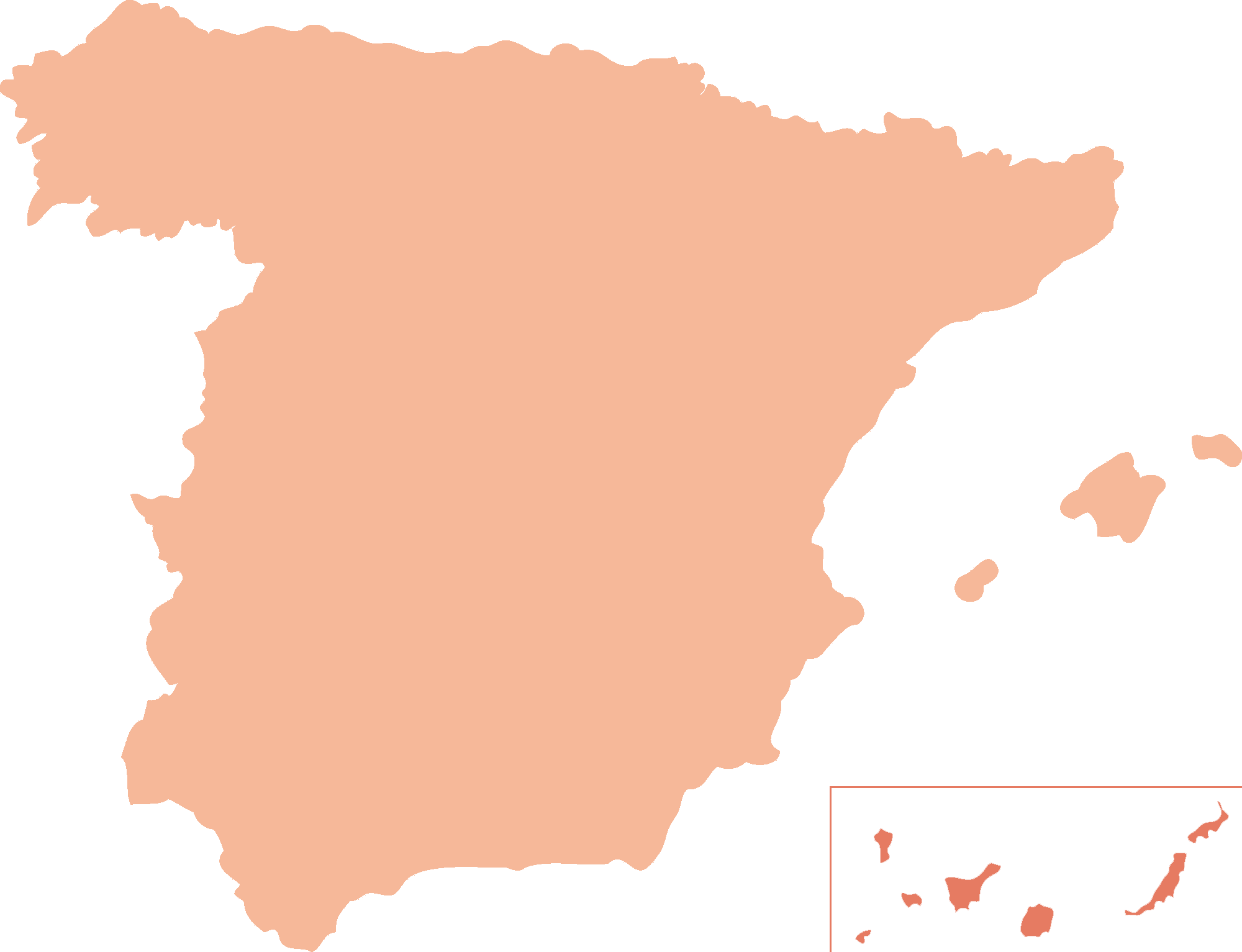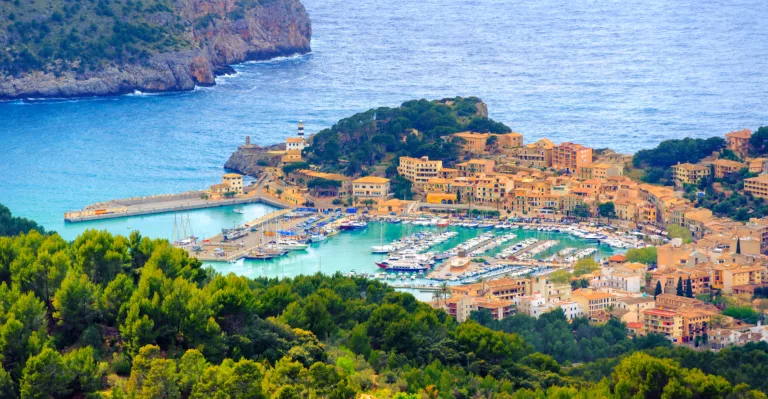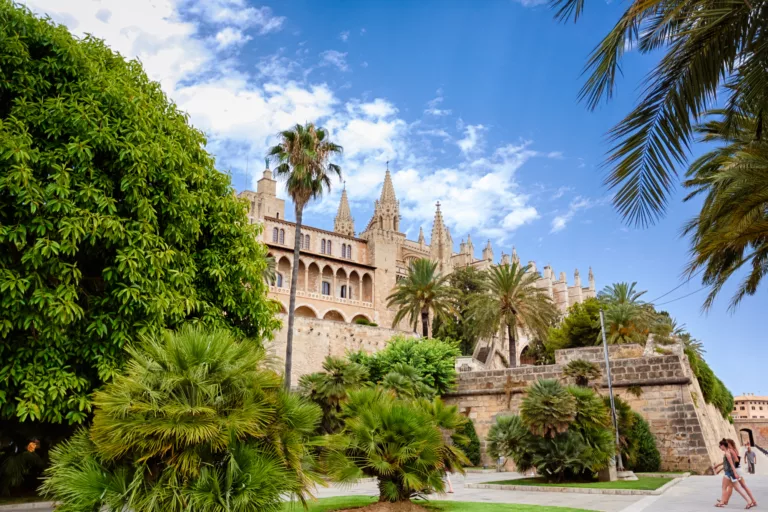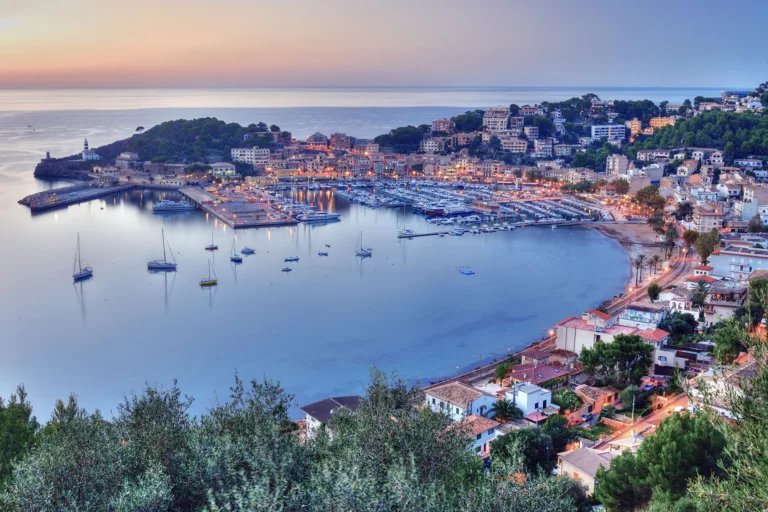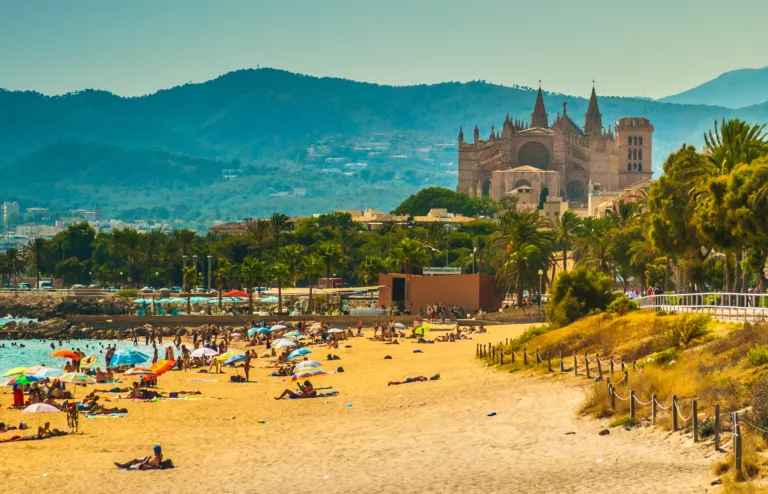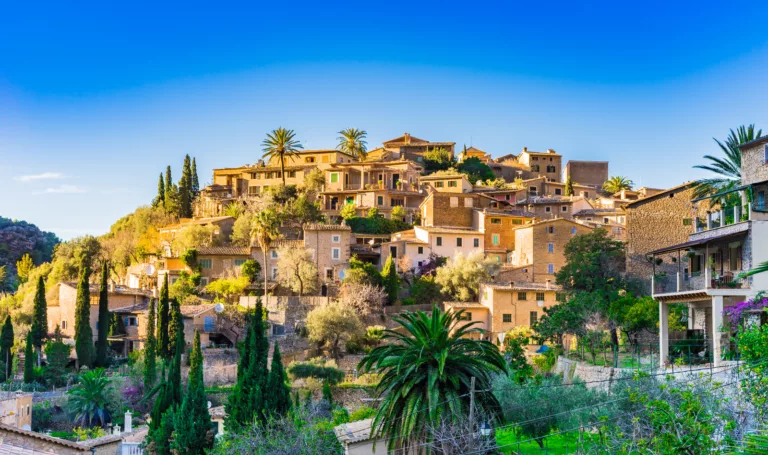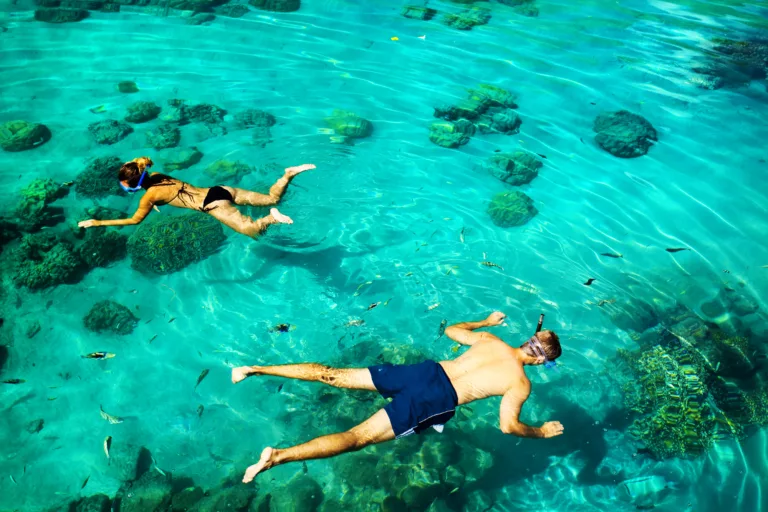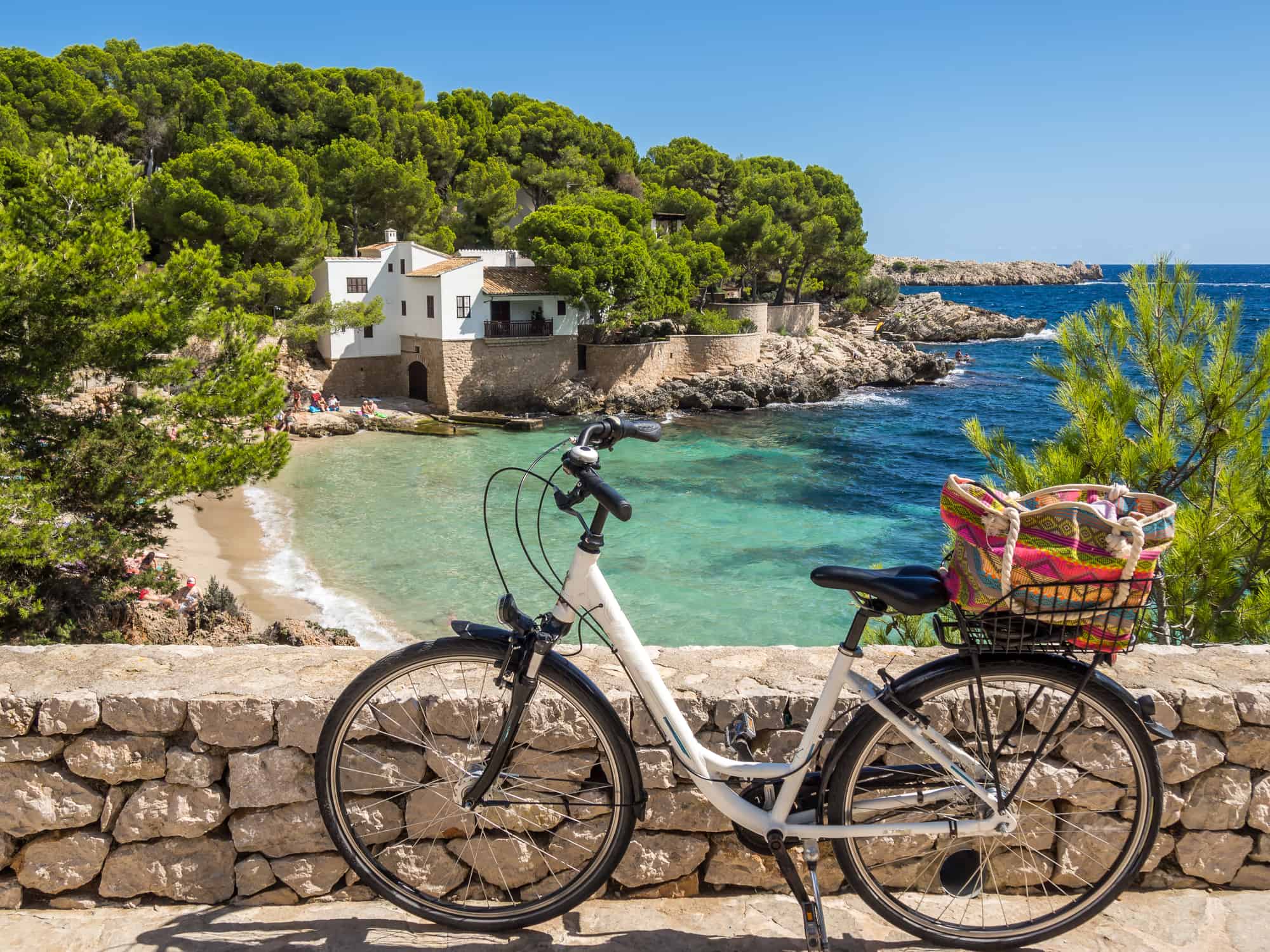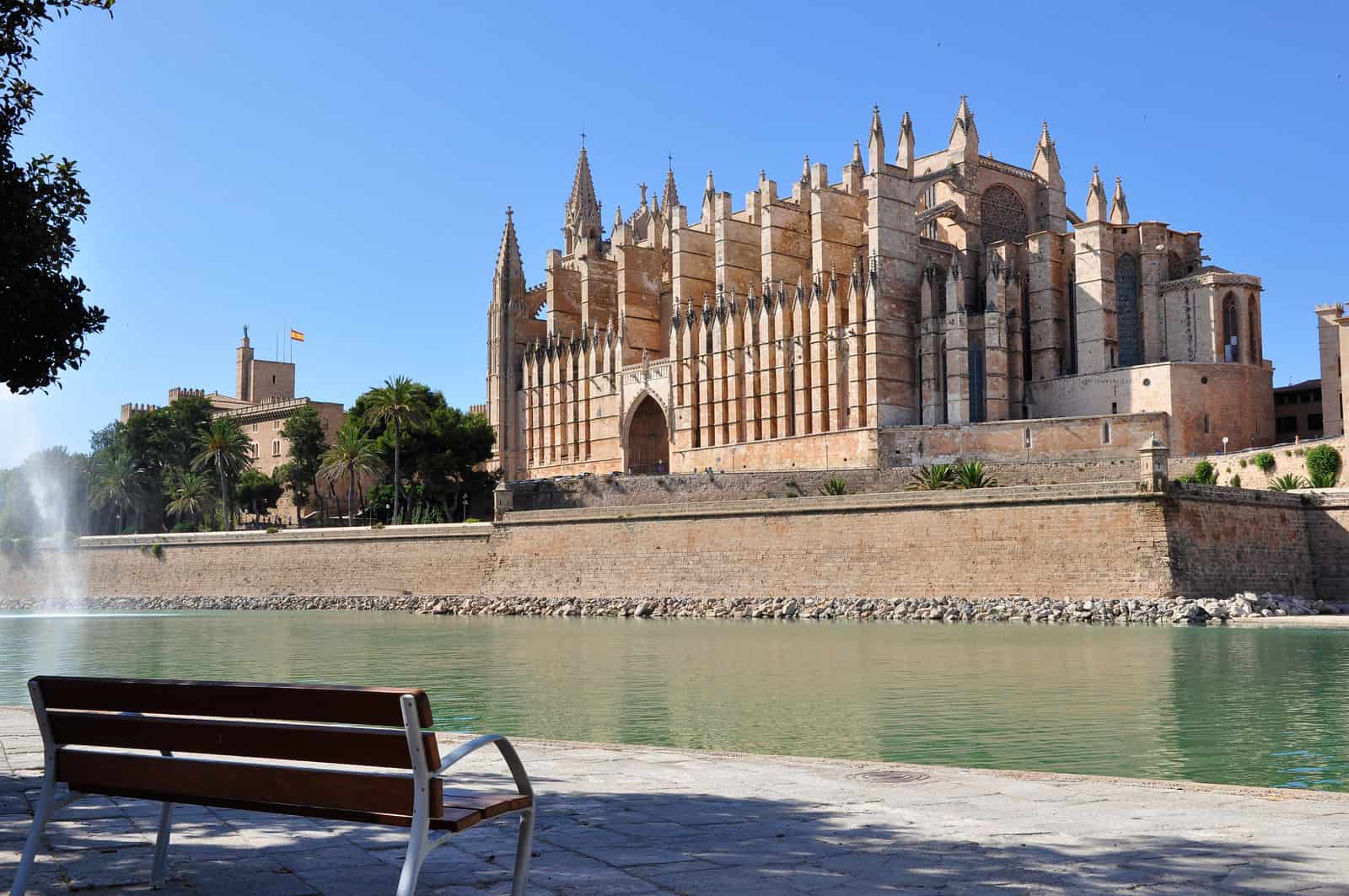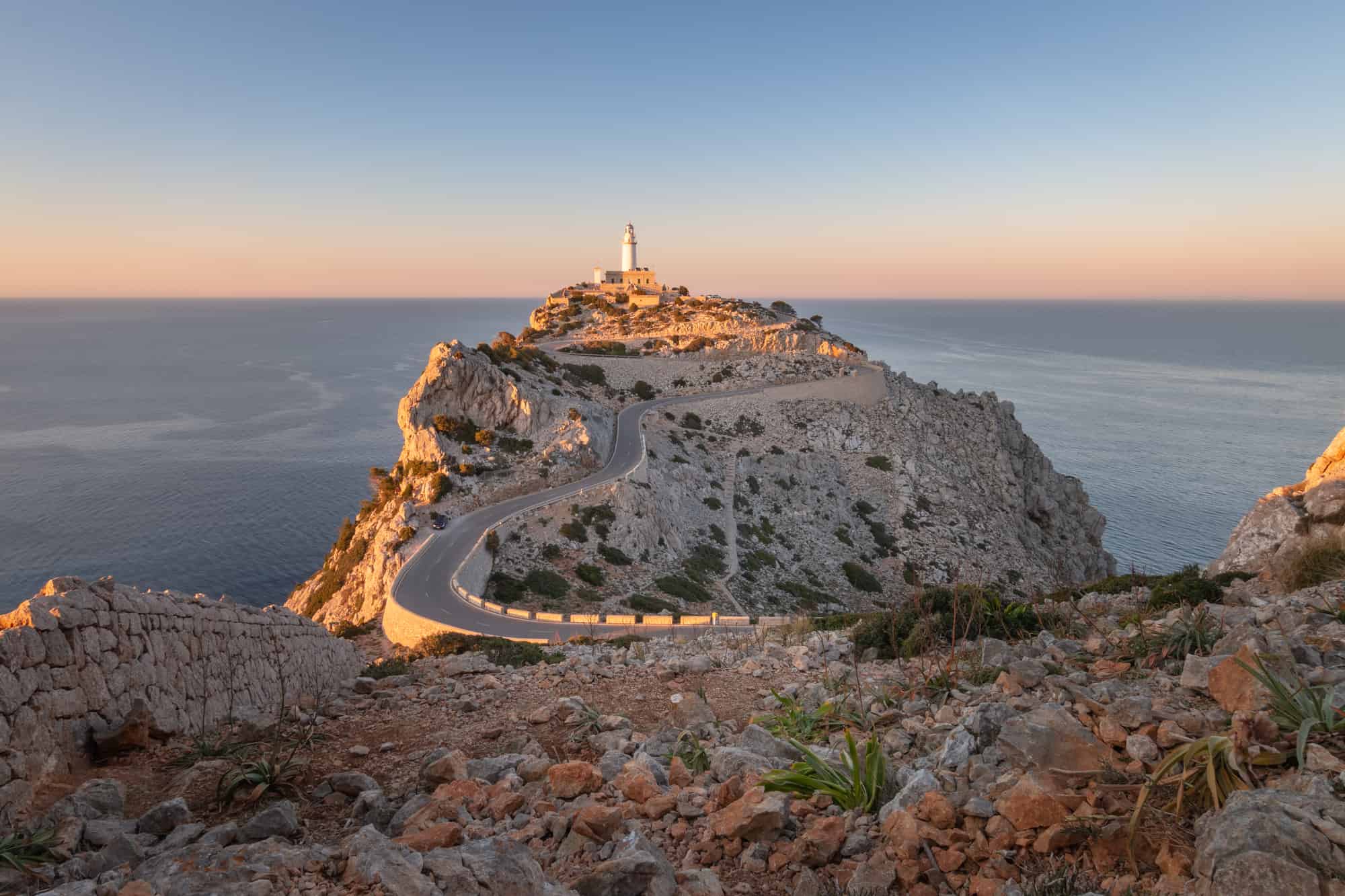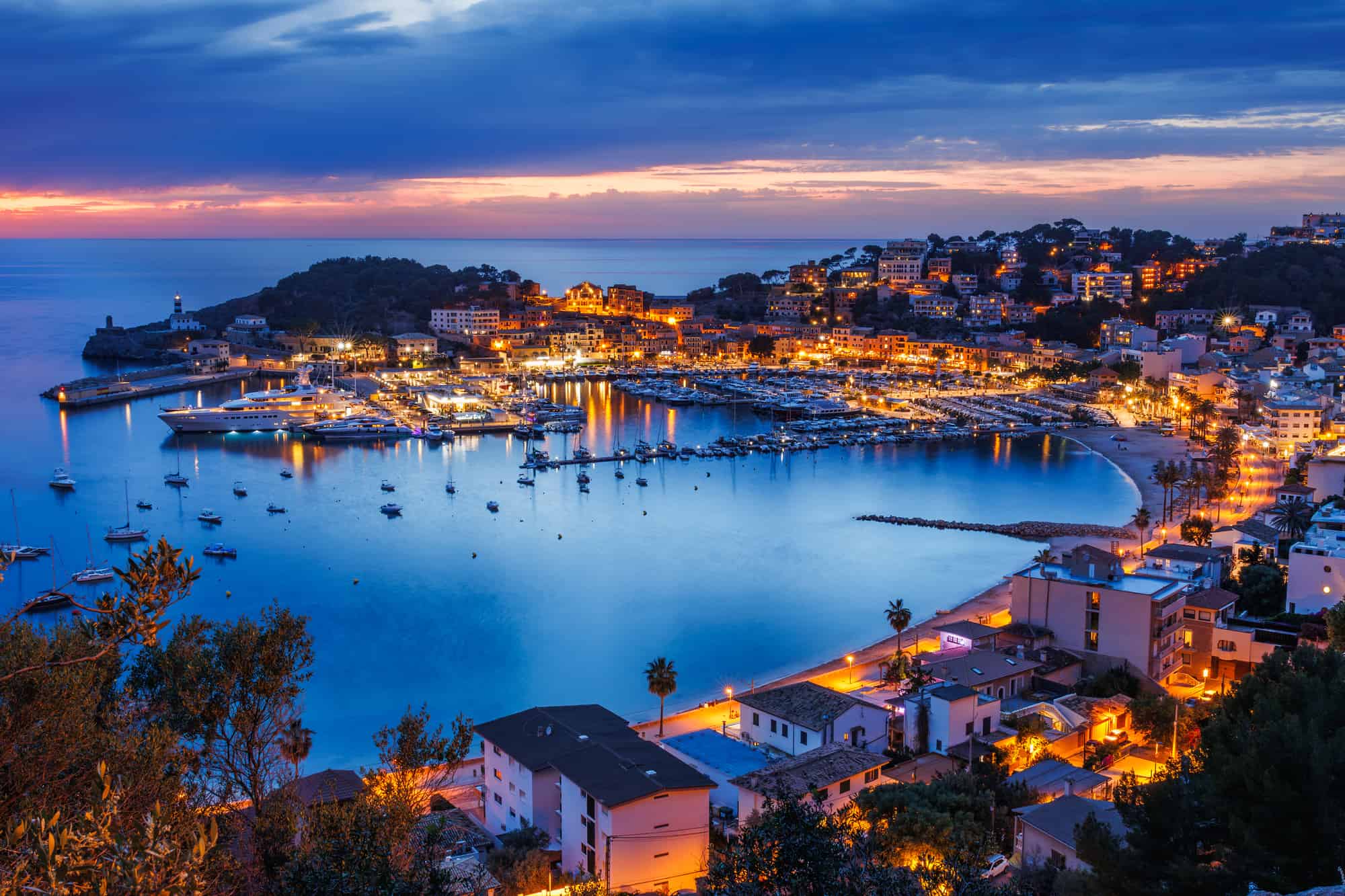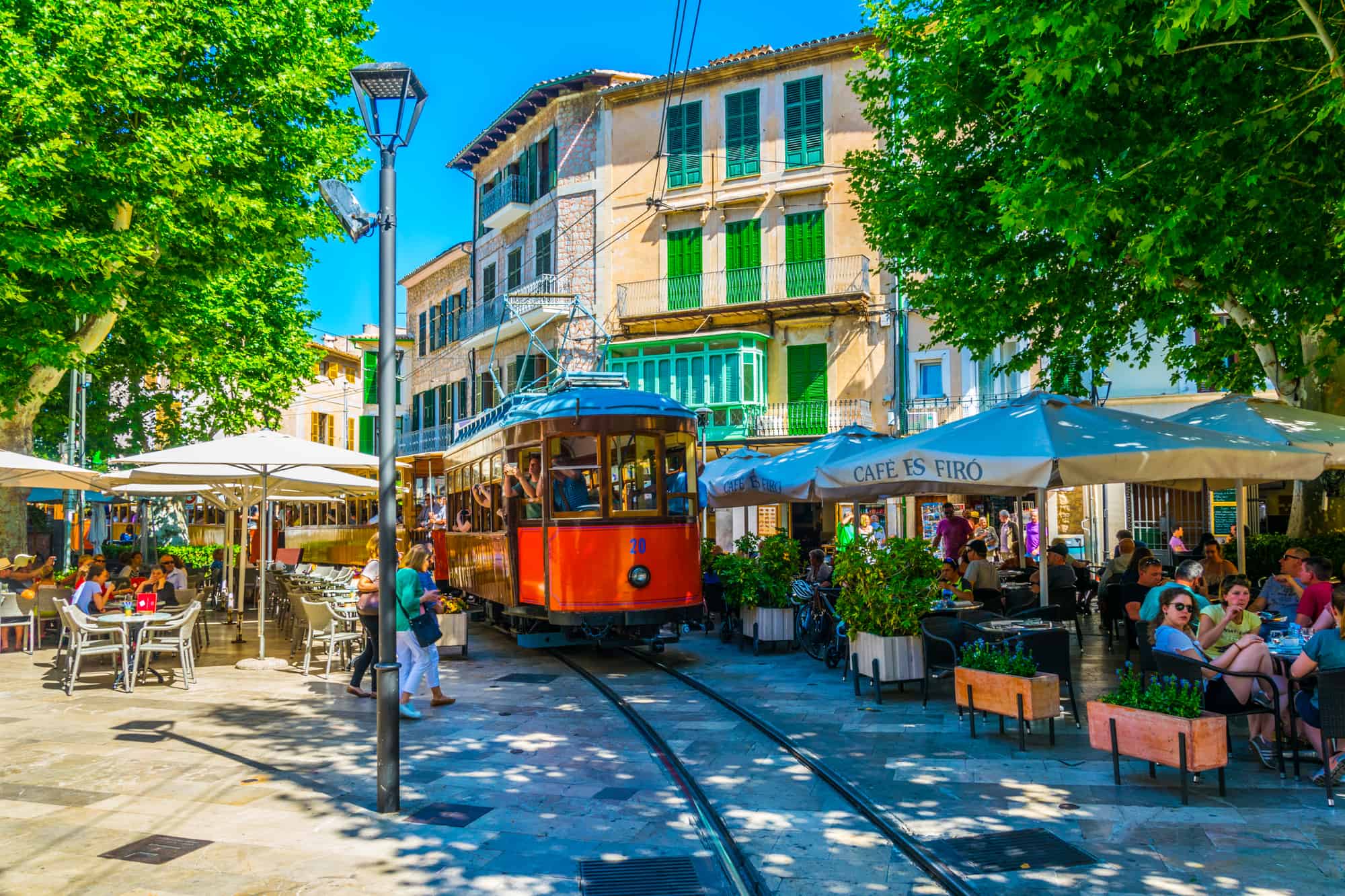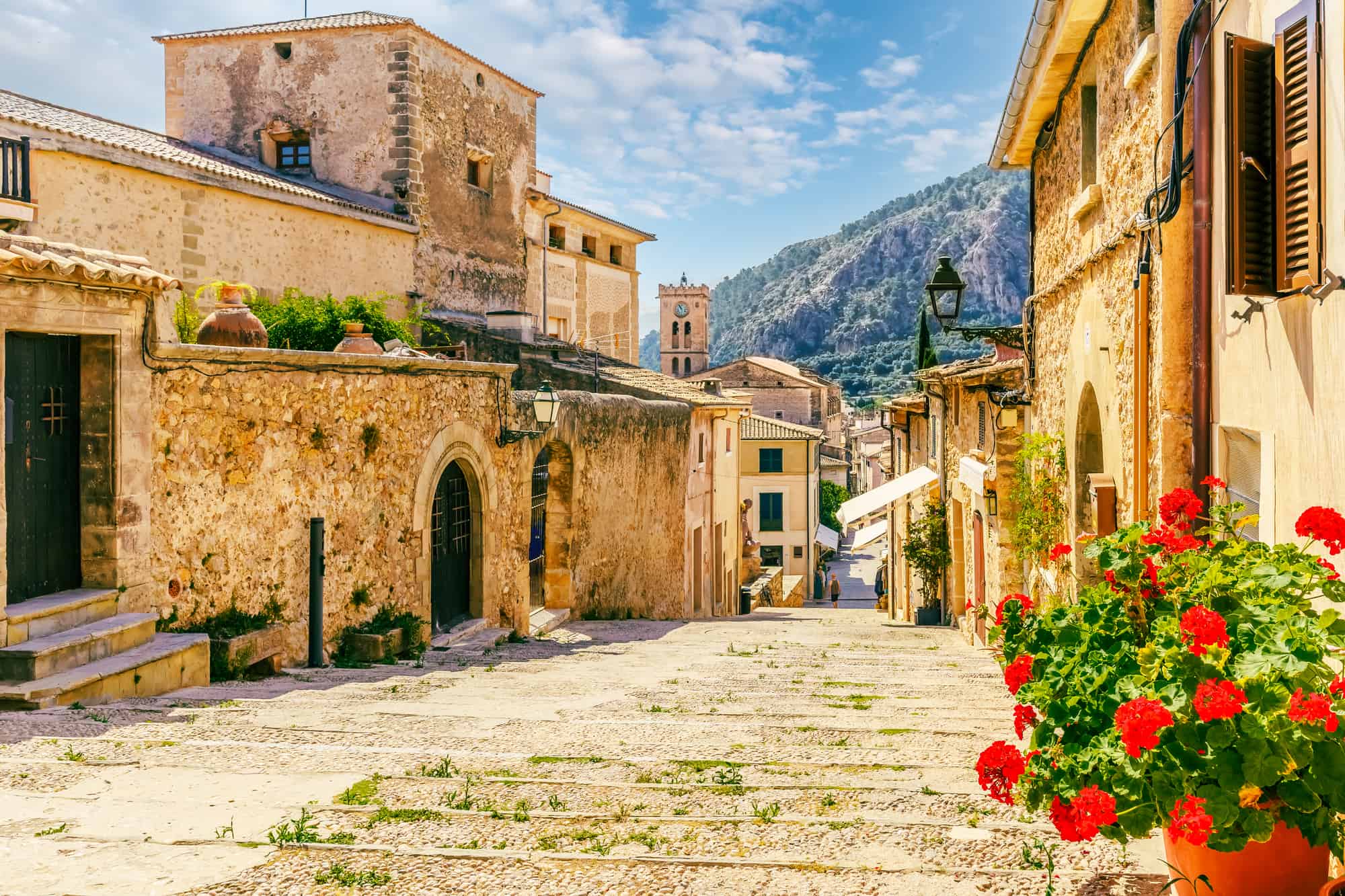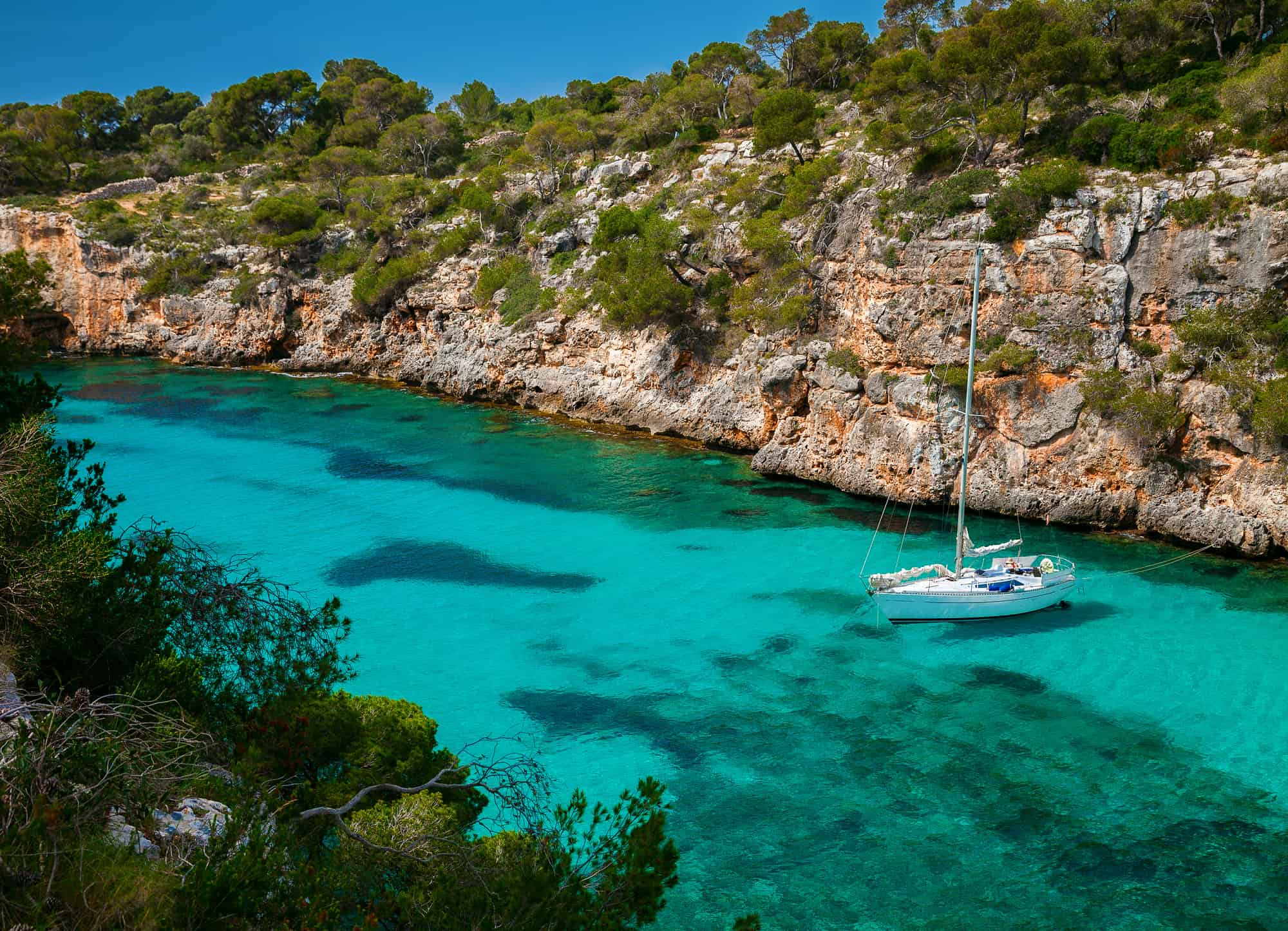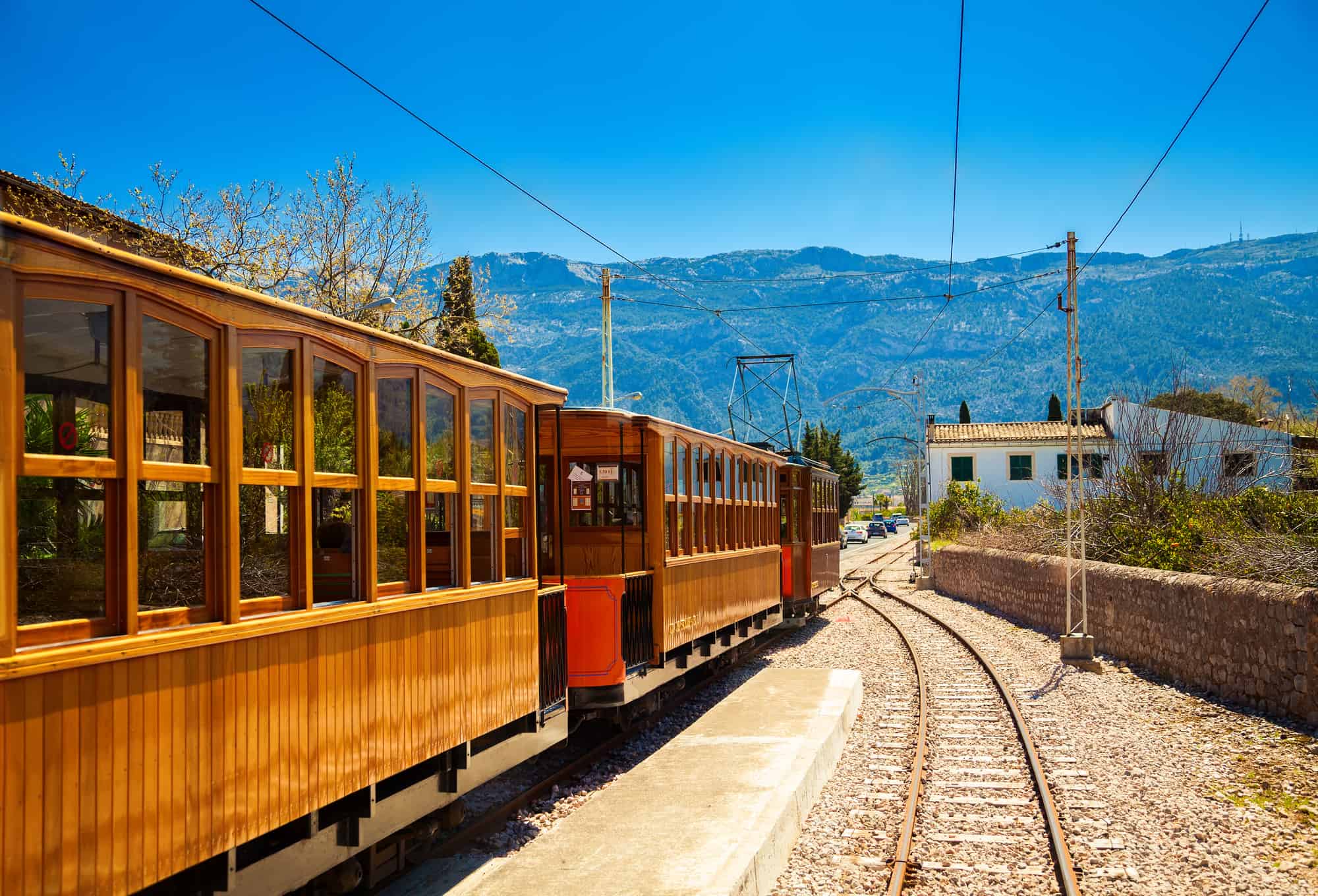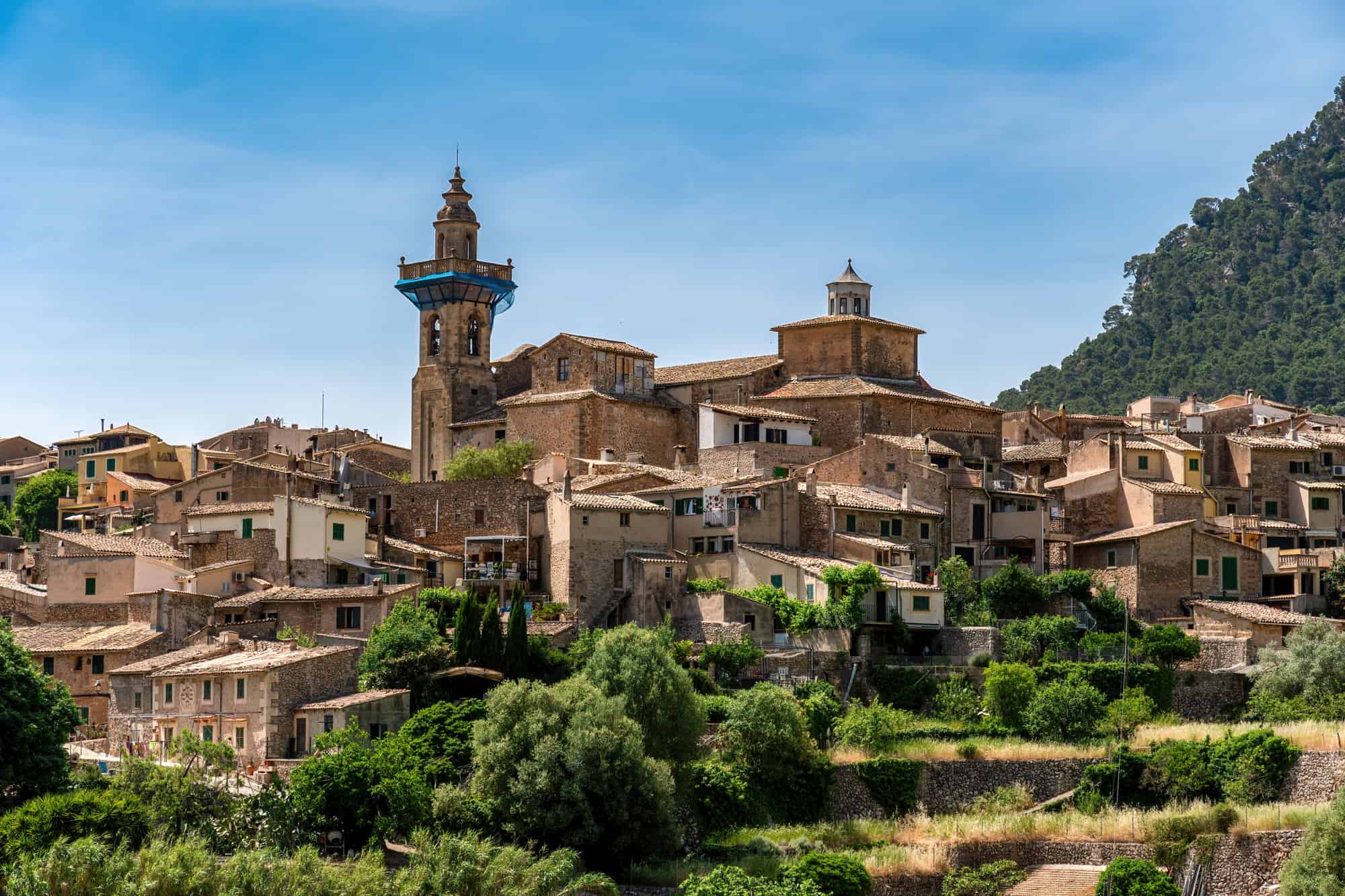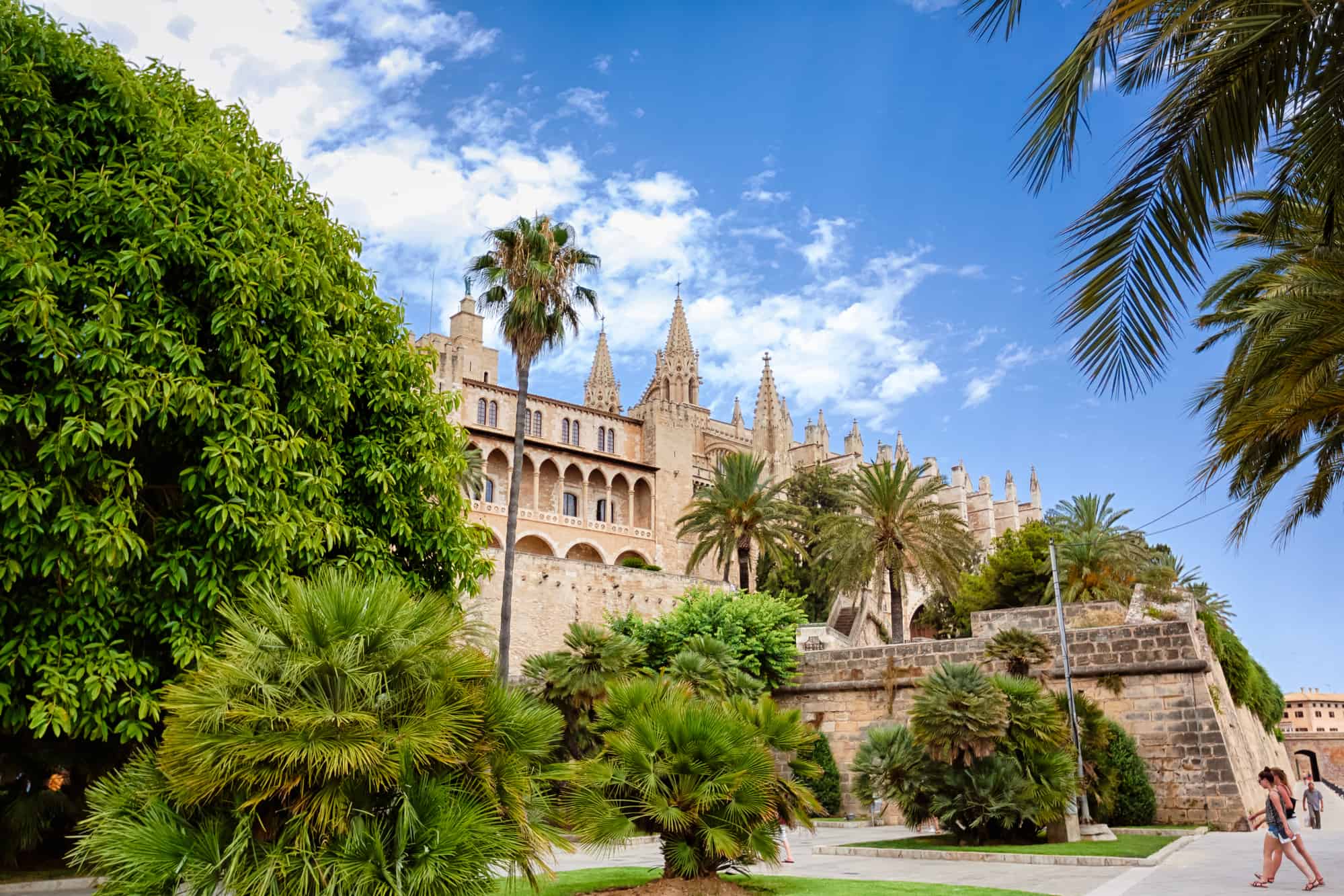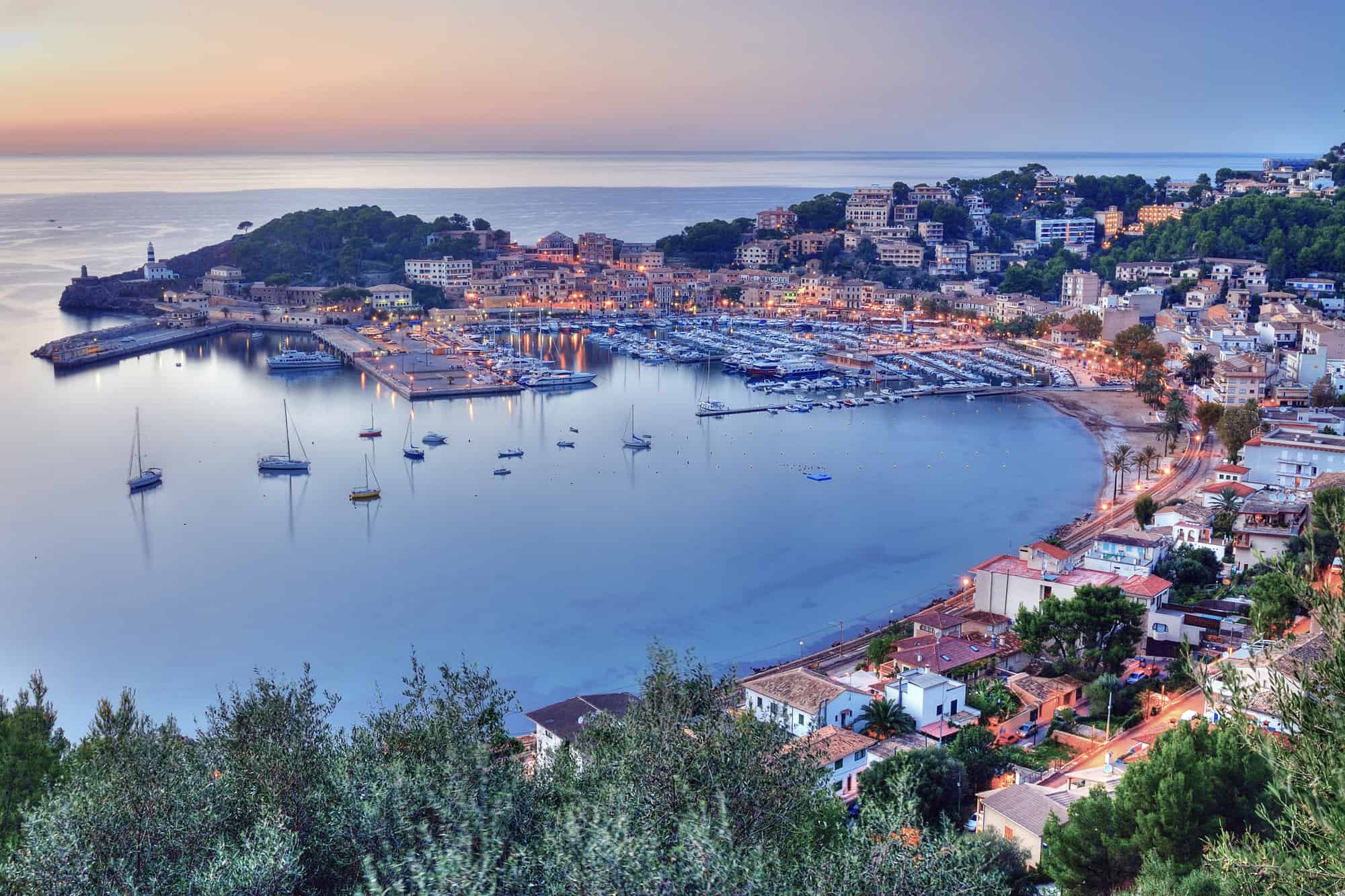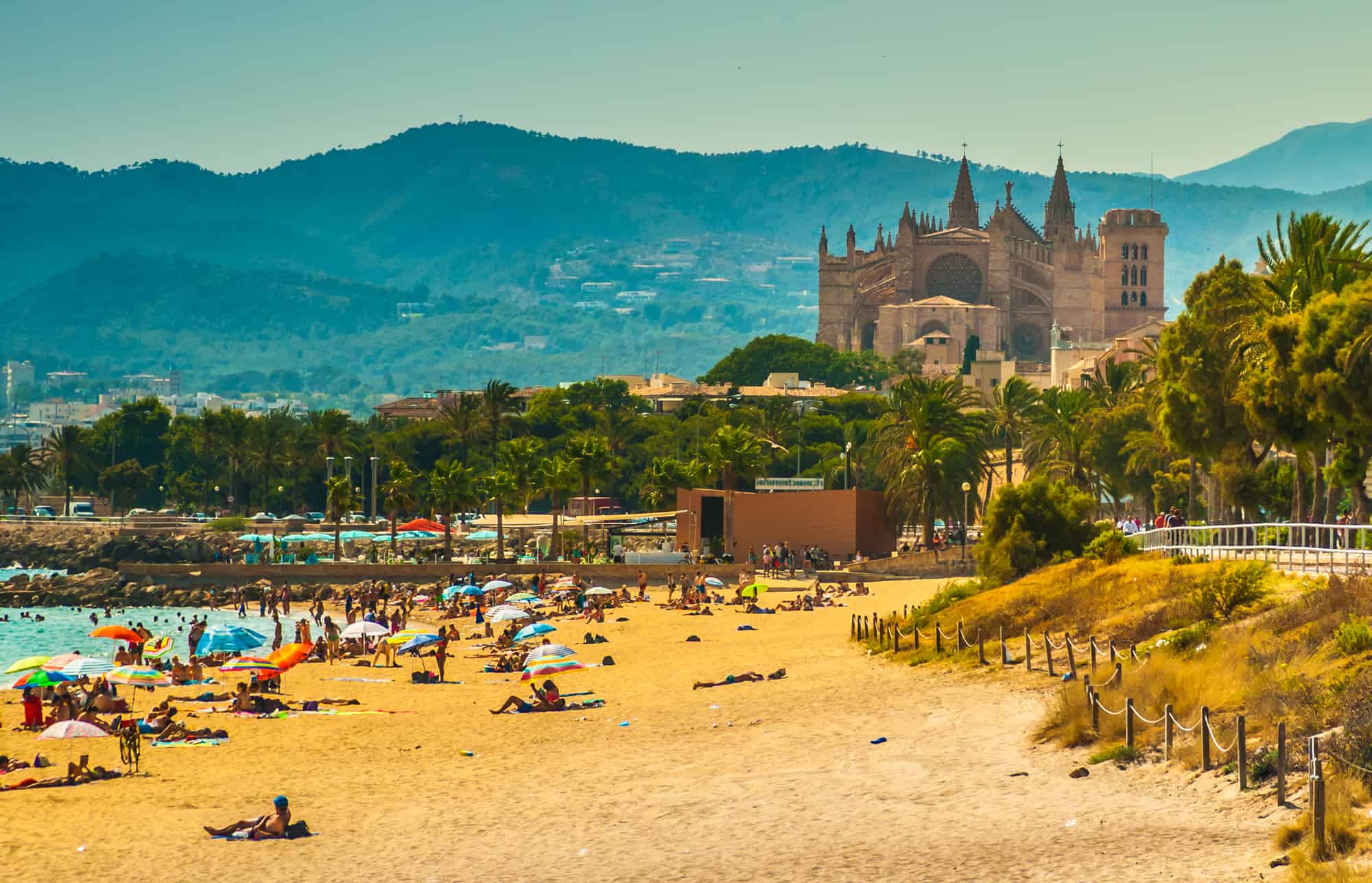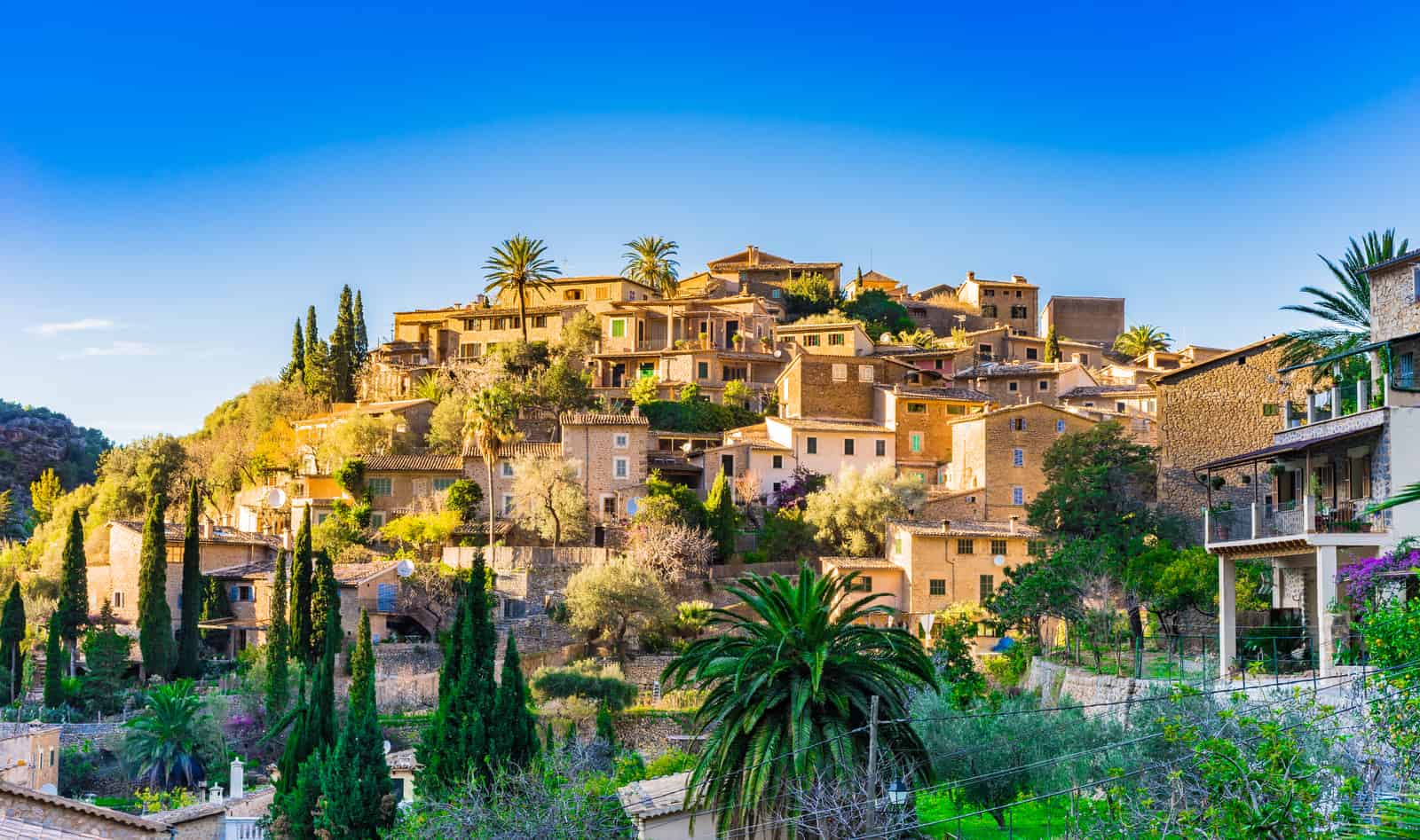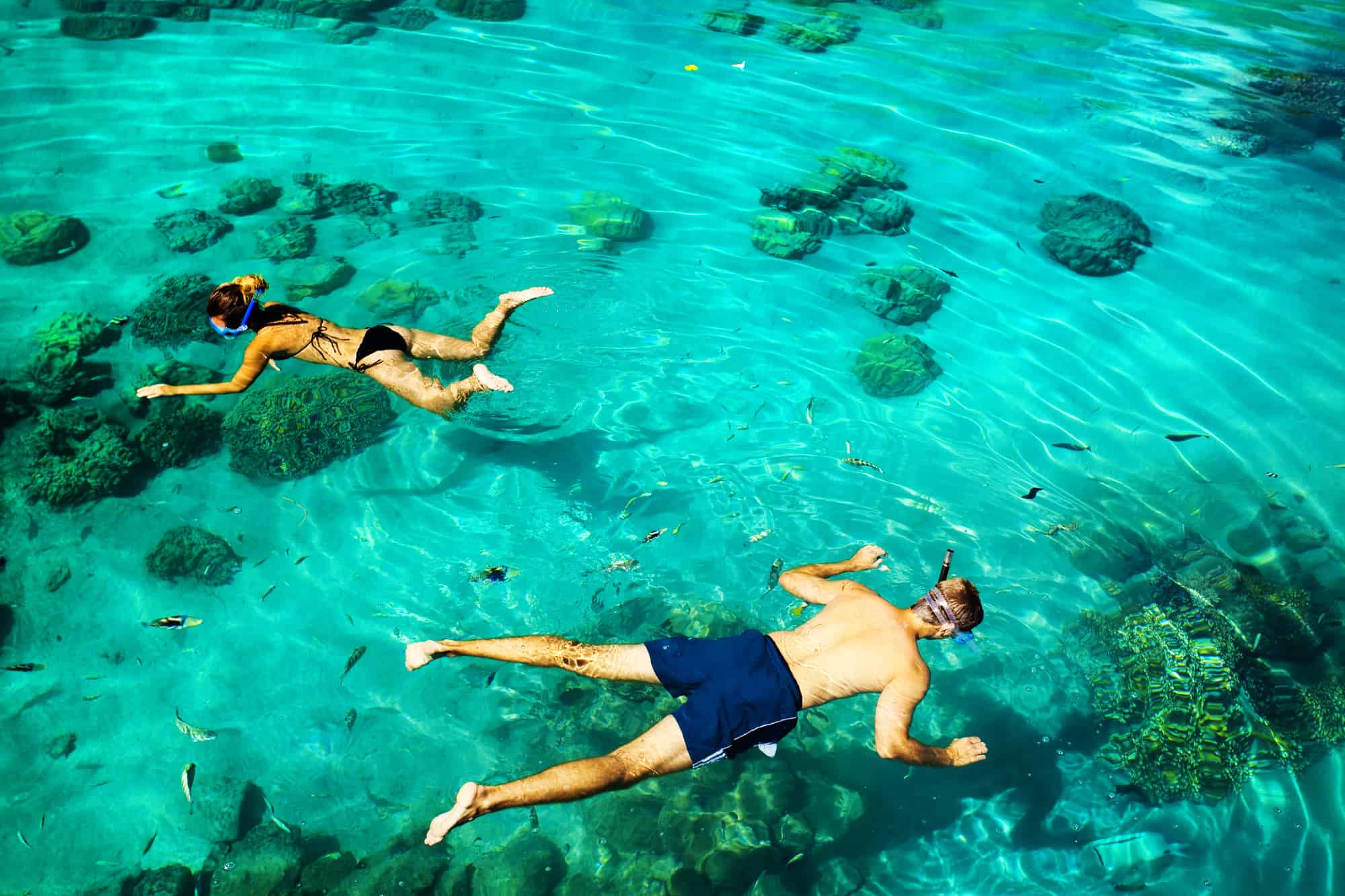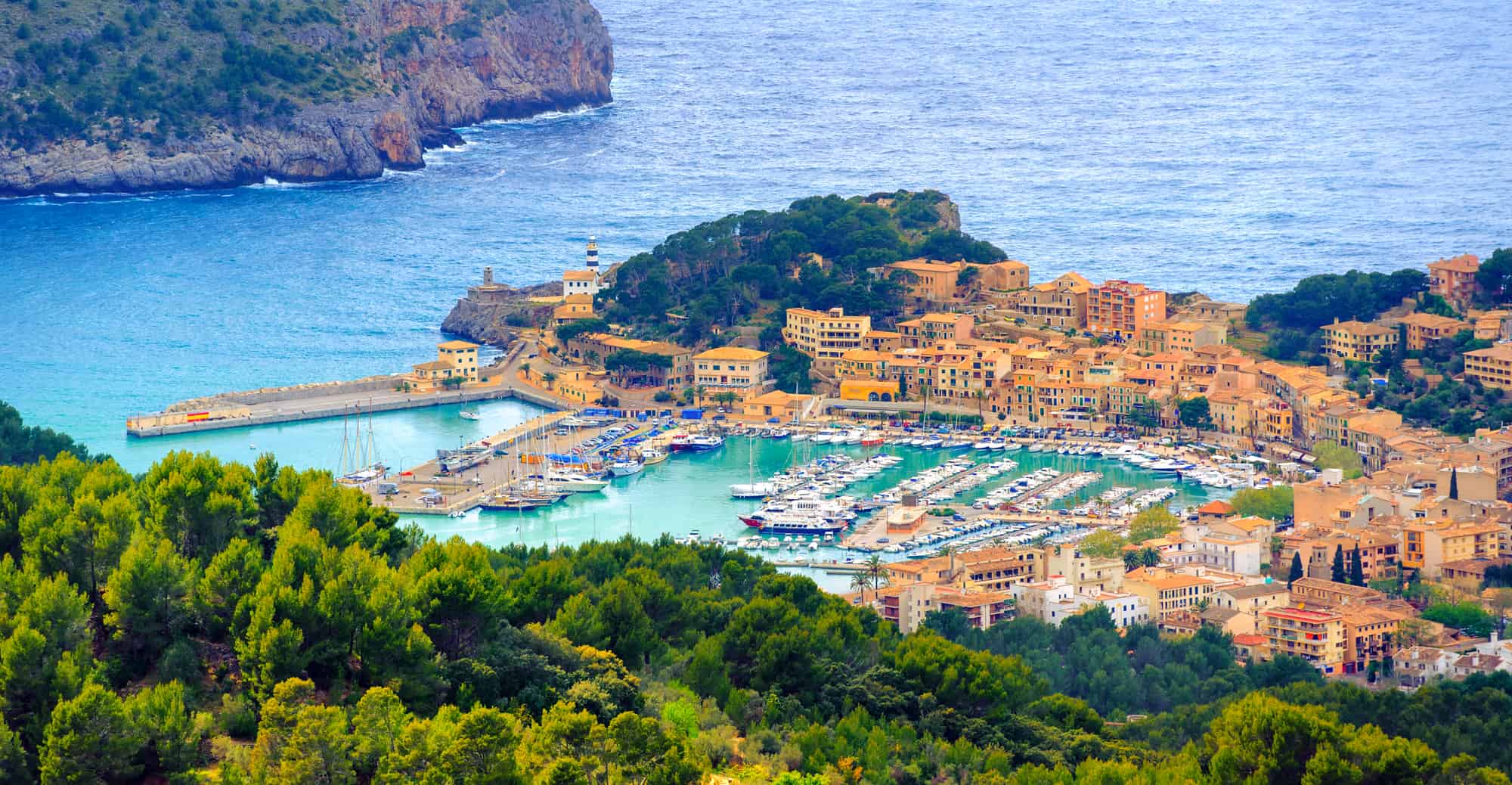
Mallorca
Mallorca is known for its beautiful Mediterranean beaches, but there’s so much more to see, like the UNESCO World Heritage-listed Serra de Tramuntana mountains. We also visited small mountain towns and villages, where we tasted unique Mallorcan dishes. The island is small, but it’s packed with variety; we could drive from quiet little beaches to the busy city center and into the mountains all in about an hour.
Mallorca’s nightlife isn’t just about the famous clubs in Magaluf. In Palma, we found lots of bars, a lively marina, and casual beach clubs. In each town, the central square fills with people in the evenings, making it a great place to hang out. Whether you’re here for a few days or more, Mallorca offers plenty of surprises that make your visit worth it.
